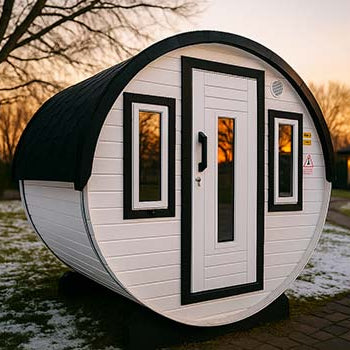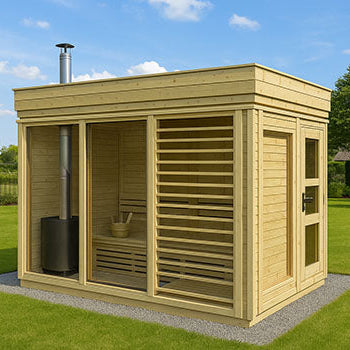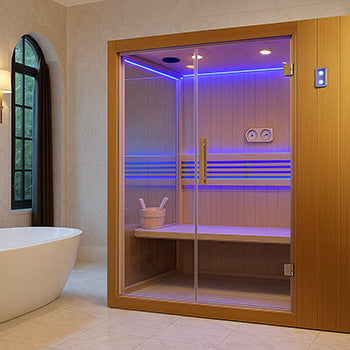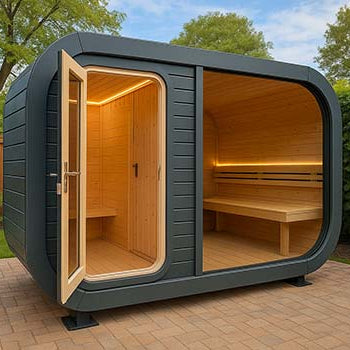Ever thought a sauna is just an expensive way to sweat? Quick answer—yes, they can be worth it. Saunas offer more than just steamy relaxation; they can boost your health, clear your head, and soothe sore muscles. Dreaming of a garden hideaway? An outdoor sauna might be the perfect weekend retreat. Or maybe you're after that warm, cabin-like glow at home? That’s where an indoor sauna makes things easy. But let’s not jump straight into the steam—let’s unpack if they’re truly worth the spend.

Is Investing in a Home Sauna a Worthwhile Decision?
Weighing the Costs Against the Benefits
Many people get swept up in the idea of owning a sauna. The promise of better health, quicker recovery, and instant relaxation sounds like a dream. But the reality? It comes at a cost—both in money and commitment. You’ll need to be honest with yourself. Will you use it often enough to make it worthwhile? Some people love their daily heat fix, while others lose interest after the honeymoon phase.
Breaking Down the Financial Investment
Upfront Costs: Purchase Price and Installation Estimates
Let’s get into the numbers. A basic home sauna starts at around £2,500, but larger or more stylish models can easily hit £15,000 or more.
Installation is an extra cost, usually between £500 to £1,500, especially if electrical work is needed. Outdoor setups might even require groundwork or weatherproofing, adding to the bill. These aren’t small sums, so it’s key to plan your budget carefully.
Ongoing Expenses: Running Costs and Maintenance
Once it’s all installed, it doesn’t stop there. Your electricity bills could rise by £100 to £300 a year, depending on how often you use your sauna. Plus, maintenance costs like cleaning supplies, wood treatment, and part replacements can add another £200 to £500 per year. It’s a bit like owning a car or hot tub—it needs looking after if you want it to last.
Considering the Required Space
Don’t forget about space. Indoor saunas need a dedicated corner or spare room. You’ll want good ventilation and enough privacy to enjoy it. Outdoor saunas need even more planning. They require a flat, safe space in your garden, away from prying eyes or bad weather. It’s not as simple as popping it into the shed.
Assessing the Value Proposition: What Do You Gain?

Health and Wellbeing Benefits (Stress Relief, Recovery, etc.)
Now, onto the good stuff. Saunas can deliver real, science-backed health perks. Regular sessions may help lower blood pressure, improve heart health, ease stress, support muscle recovery, and even improve sleep. Some people also find that they feel mentally refreshed after a good sauna session, giving them time to pause, unwind, and disconnect.
The Convenience Factor: Sauna Access Anytime
This is where home saunas shine. You can use it anytime, any day, no matter the weather or your schedule. No more rushing to the gym before closing or squeezing into busy public saunas. For busy parents or those working from home, the convenience alone might make the investment worthwhile.
Privacy and Personalisation of Your Sauna Experience
At home, it’s all yours. You can make your sauna as fancy or as simple as you like. Play your music, add essential oils, or sit in peaceful silence. No need to share the space or awkwardly make small talk with strangers. You can also adjust the temperature and humidity to your liking.
Home Sauna vs. Alternatives: A Value Comparison
Gym Memberships, Spa Visits, Public Saunas
A gym membership might seem cheaper, but at £30 to £80 per month, it adds up fast. That’s £360 to £960 a year, and over five years, that’s several thousand pounds. Spa days feel indulgent, but can cost even more per visit. And public saunas? They often lack privacy and comfort.
Long-Term Cost Savings Potential
If you’re a regular sauna-goer, a home sauna might save you money over the long term. The upfront investment is steep, but if you use it regularly, it can work out cheaper than endless gym memberships or spa trips. Plus, it’s always there when you fancy it.
Key Questions to Ask Yourself Before Buying
How Often Will I Genuinely Use It?
This is the biggie. Be honest—will you use it weekly or even more? Or will it gather dust like that old exercise bike? Saunas only offer value if they become part of your routine. Otherwise, it’s an expensive garden ornament.
Does It Align with My Budget and Lifestyle?
Look at your lifestyle and finances. Can you afford it comfortably without stress? Do you have the space? Saunas should enhance your life, not create more hassle.
What Are My Main Motivations?
Know your ‘why’. Are you after health benefits, relaxation, or a touch of luxury? If it’s just to show off on social media, it might not be worth it. But if it’s for your health, stress relief, or recovery, it could be a great addition to your wellness routine.
Conclusion: Determining if a Home Sauna is "Worth It" for You

So, are saunas worth it? They can be—but only if they fit your lifestyle, your space, and your budget. From cosy indoor saunas perfect for quiet evenings to outdoor sauna escapes where you can unwind in your garden, the value is personal. It’s about how often you’ll use it, how much you’ll enjoy it, and whether it fits into your daily life.
The key? Think it through carefully. Do the maths. Check your ‘why’. Make sure you’re doing it for your well-being, not just because it looks good in photos. A sauna should feel like a treat, not a chore.









